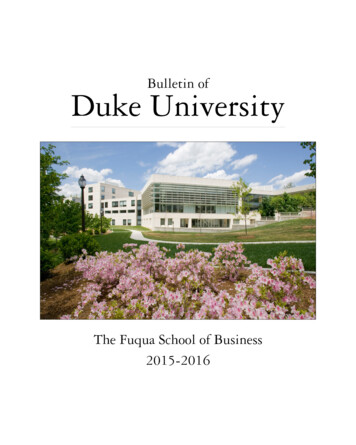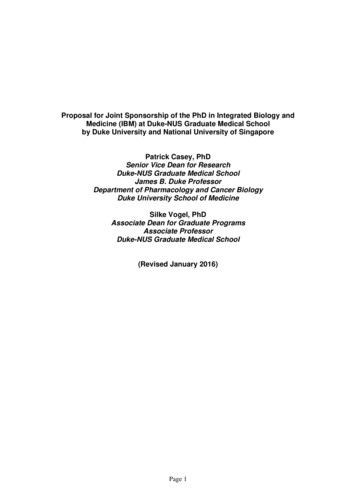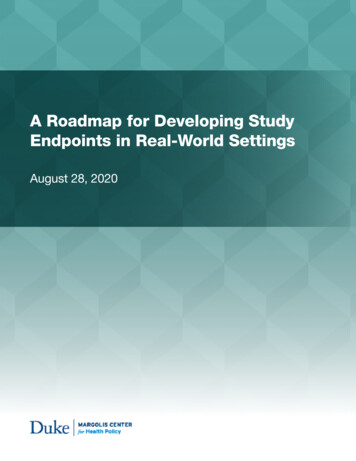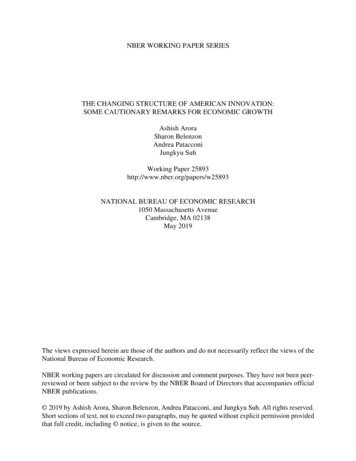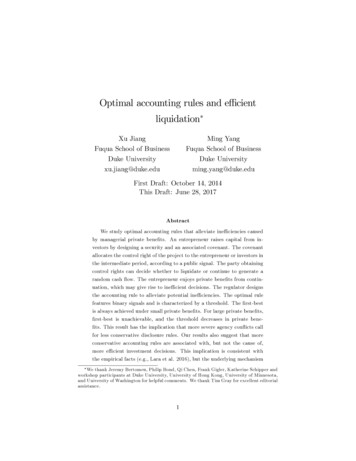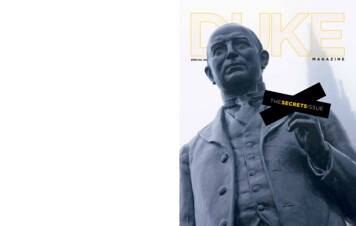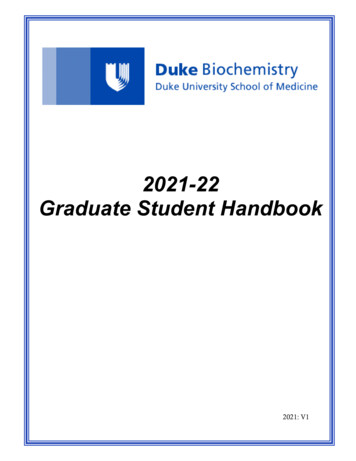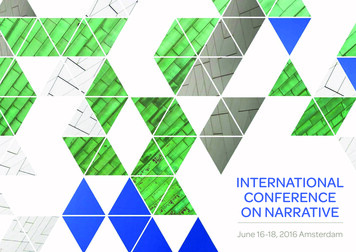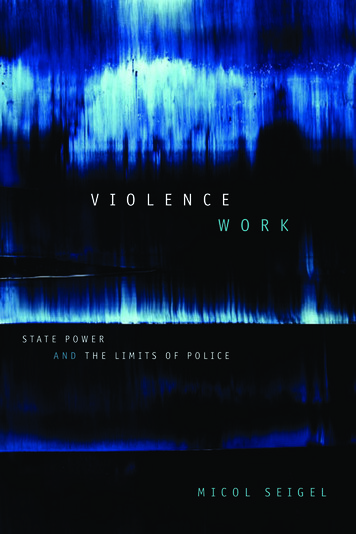
Transcription
V I O L E N C EW O R KS TAT E P O W E RAND THE LIMITS OF POLICEM I C O LS E I G E L
V I O L E N C EWORK
M I C O LS E I G E LV I O L E N C EWOs tat e p o w e rand theRKlimits of policeDuke University Press Durham & London 2018
2018 Duke University PressAll rights reservedPrinted in the United States of Amer ic a on acid- free paper Designed by Matthew TauchTypeset in Minion Pro by Westchester Publishing ServicesLibrary of Congress Cataloging- in- Publication DataNames: Seigel, Micol, [date] author.Title: Vio lence work : state power and the limits of police /Micol Seigel.Description: Durham : Duke University Press, 2018. Includes bibliographical references and index.Identifiers: lccn 2018002260 (print) lccn 2018008083 (ebook)isbn 9781478002024 (ebook)isbn 9781478000020 (hardcover : alk. paper)isbn 9781478000174 (pbk. : alk. paper)Subjects: lcsh: United States. Agency for InternationalDevelopment. Office of Public Safety. Police brutality—United States. Police training— United States. State- sponsored terrorism— United States.Classification: lcc hv8141 (ebook) lcc hv8141 .S3862018 (print) ddc 363.2/20973— dc23lc rec ord available at https:// lccn . loc . gov / 2018002260Cover art: Koen Lybaert, Deep blue I [Abstract N 2143].Courtesy of the artist and Esther Santoyo Gallery.
C O N T E N T SviiA C K N O W L E D G M E N T S1INTRODUCTION25ONEThe Office of Public Safety, the LEAA,and US Police52TWOCivilian or Military? Distinctionby Design73THREE99FOURCorporate States and GovernmentMarkets for Saudi Arabian Oil121FIVEProfessors for Police: The Growthof Criminal Justice Education146SIX179CONCLUSION189APPENDIX191A B B R E V I AT I O N S193NOT E S249BIBLIOGRAPHY293INDEXPolicing and State Power“Industrial Security” in Alaska:The Great Public- Private DivideExiles at Home: A Refugee Structureof FeelingReckoning with Police Lethality
A C K N O W L E D G M E N T SThank you, world, for the incredible privilege of writing this book, and allthe conversations and relationships that seeded it and that it enabled.For those vital engagements, thanks to so many brilliant friends andcolleagues. First Stuart Schrader, who shared critical resources early onand generative insights all along the way, and whose forthcoming book will be the field- anchoring account of the transnational circulation of USpolicing in the early Cold War period. Next Martha Huggins, whose scrupulous Po liti cal Policing was indispensable, and who received me in herNew Orleans home, guiding me at a crucial early moment; A. Naomi Paik,whose thorough and challenging review made this a vastly better book;and Gisela Fosado, Lydia Rose Rappoport- Hankins, and Maryam Arainat Duke University Press for wonderfully supportive shepherding throughthe publication pro cess. Thanks also to the two anonymous press reviewers, and to the friends and colleagues who read sections or the entire objectand offered invaluable feedback: Shana Agid, Ethan Blue, Melissa Burch,Alex Chambers, Giselle Cunanan, Keith Feldman, Ilana Gershon, CraigGilmore, Kelly Lytle Hernandez, Nzingha Kendall, Dana Logan, StephanieKane, Courtney Mitchel, Margaret Power, Caitlin Reynolds, Jayn Rosenfeld(my mom), Peter Winn, Marilyn Young, Sarah Zanti, and Elana Zilberg.To friends and colleagues in Indiana, my everyday lifelines, whoheard chapters, read pieces, critiqued, and generously worked throughknots: Marlon Bailey, Purnima Bose, Claudia Breger, Stephanie DeBoer,David Fisher, Lessie Jo Frazier, Walter Gantz, Ross Gay, Ilana Gershon,
Jeff Gould, Mary Gray, Shane Greene, Rae Greiner, Karen Inouye, DannyJames, Colin Johnson, Eileen Julien, LaMonda Horton- Stallings, KelseyKauffman, Rebecca Lave, Susan Lepselter, Alex Lichtenstein, Ed Linenthal,Eden Medina, Marissa Moorman, Michelle Moyd, Khalil Muhammad,Maritza Quiñones, Ben Robinson, Susan Seizer, and Shane Vogel. To the iuAmerican Studies community, especially my most enduring and satisfying intellectual interlocutors, gradu ate standouts Alex Chambers, Giselle Cunanan, Nzingha Kendall, Dana Logan, Courtney Mitchel, Rudo Mudiwaand Caitlin Reynolds, and former Inside- Out students Jarrod Wall, Michelle Jones and Anastasia Schmid. To the undergraduate students whohave accompanied the Inside- Out Prison Exchange Program, inside andout, too many to list by name, I trea sure you; you push my thinking aboutpolice and punishment in unexpected directions. To my fellow local organizers, indispensable to sustaining my energy and faith in the possibility ofchange, especially stalwarts Chris Abert, Bob Arnove, Mia Beach, LindseyBadger, Ryan Conway, Hugh Farrell, Nick Greven, Sam Harrell, MeganHutchison, James Kilgore, Erin Marshall, Bryce Martin, Bill Mullen, WillyPalomo, Lauren Taylor, and Judah Schept.To my colleagues in the Critical Prison Studies caucus of the asa,source of my most relevant and insistent academic engagements over thelast half- dozen years: Shana Agid, Dan Berger, Lisa Bhungalia, Ethan Blue,Melissa Burch, Jordan Camp, Dan Chard, Simone Davis, Keith Feldman,Craig Gilmore, Ruthie Gilmore, Alan Eladio Gómez, Sarah Haley, MichaelHames- Garcia, Zoe Hammer, Christina Hanhardt, Gillian Harkins, Christina Heatherton, Rebecca Hill, David Hernández, Kelly Lytle Hernández,Kerwin Kaye, Marisol LeBron, Sonia Lee, Laura Liu, Jenna Loyd, EricaMeiners, Anoop Mirpuri, Naomi Murakawa, Jack Norton, Sujani Reddy,Dylan Rodriguez, Judah Schept, Rob Scott, Stuart Schrader, Rashad Shabazz, Dean Spade, Tamara Spira, Eric Stanley, David Stein, Brett Story,Heather Thompson, Emily Thuma, Lucia Trimbur, Elissa Underwood, andTryon Woods.To the participants in the always- provocative Tepoztlán Institute forthe Transnational History of the Amer ic as, especially those who engagedme on the subject of this book in 2011 and 2014: Marisa Belausteguigoitia, Devyn Benson, Ben Cowan, Reiko Hillyer, Bethany Moreton, ToreOlssen, Osmundo Pinho, Alexandra Puerto, William Robinson, ChristyThornton, Sarah Townsend, Pam Voeckel, Karl Swinehart, Dillon Vrana,Adam Warren, and Elliott Young.viii A cknowledgments
To friends and colleagues who sent along sources or leads: Lindsey Badger,Melissa Burch, Beth Baker- Cristales, Purnima Bose, Michelle Brown, RosieBsheer, Jordan Camp, Brooke Campbell, Amy Chazkel, Julia Foulkes, LessieJo Frazier, Craig Gilmore, Ruthie Gilmore, Adam Goodman, Nick Greven,Matthew Guterl, Paul Kramer, Alex Lichtenstein, Jenna Loyd, MatthewMitchelson, Tore Olssen, A. Naomi Paik, Tonia Poteat, Alexandra Puerto,Rosenilda Sant’anna, Judah Schept, Stuart Schraeder, Giovanna Shay, andShane White. To scholars whose work has guided me in particularly usefuldirections: Lisa Marie Cacho, Angela Davis, Colin Dayan, Edward Escobar,Denise Ferreira da Silva, Ruthie Gilmore, Avery Gordon, Joy James, JulillyKohler- Hausmann, Paul Kramer, Jeremy Kuzmarov, Alfred McCoy, FredMoten, A. Naomi Paik, Lorna Rhodes, Dylan Rodriguez, Stuart Schrader,Bryan Wagner, Brackette Williams, Clyde Woods, Marilyn Young, and ElanaZilberg. To James Woodard, who suggested I consider ops (at an aha cocktail party, of course), to David Sartorius for housing me in DC during anearly moment of research and to Shana Agid, whose reaction to my titlemade me realize that it was the right one. To Andrew Friedman for generousconsultation and reflection on the question of anonymity and consent; toPaul Amar for guidance on Saudi Arabia; to Marilyn Young for challengingme to rethink oral histories, with sorrow at her passing; to Ashley Hunt formaking art about disaster. To my fellow writers who made a pair of week- long summer retreats not just productive but completely fun: ClaudiaBreger, Myrna Garcia, Rae Greiner, A. Naomi Paik, Lucinda Ramberg,Susan Seizer, and Felicia Y. Thomas.To organizers and respondents at a series of much- appreciated talks andconferences: Rosie Bsheer and Charlotte Kiechel at the Yale InternationalHistory Workshop, October 2017; Elizabeth Hinton, Lisa McGirr, and myfellow fellows at the Warren Center seminar in fall of 2017; Michelle Brown,Tony Platt, and Judah Schept at New Directions in Critical Criminology, University of Tennessee, Knoxville, 2016; Josh Lund, Anne Garland Mahler,and Brackette Williams at Men with Guns: Cultures of Paramilitarism andthe Modern Amer ic as, University of Arizona, 2015; Nick Greven at Drug WarCapitalism, Indiana University, 2015; Rhys Machold, Brendan McQuade,and Mark Neocleous at Police Science for the Twenty- First Century, CarletonUniversity, Ottowa, 2015; Majed Akhter, Ishan Ashotush, Hamid Ekbia, MarkNeocleous, and Tyler Wall at Reconfiguring Global Space: The Geography, Politics, and Ethics of Drone War, Indiana University, Bloomington, 2015; BreeCarlton and Sharon Pickering at the Criminology Seminar Series, MonashA cknowledgments ix
University, Melbourne, 2014; David Charles Goodman at the School ofHistorical and Philosophical Studies, University of Melbourne, 2014;Ethan Blue at the Perth USAsia Studies Centre’s Security Across ColonialSpheres: Policing Indigeneity, Citizenship, Alienage, and Criminality, University of Western Australia, Perth, 2014; Thomas Jessen Adams, FrancesClarke, Miranda Johnson, Brendon O’Connor, Rebecca Sheehan, and ShaneWhite at the History on Mondays seminar series, Department of History,University of Sydney, 2014; Gillian Cowlishaw and Luis Angosto Ferrandez at the Anthropology Seminar Series, University of Sydney, 2014; LisaGuenther, Melissa Burch, Laura McTighe, Mercy Romero, Judah Schept,and Brett Story at Rethinking Prisons, Vanderbilt University, Nashville,2013; Chris Garces and Lucinda Ramberg at the Latin American StudiesProgram Spring lecture series, Cornell University, Ithaca, 2013; KathleenBelew at Histories of Vio lence, Northwestern University, Evanston, 2013;Suvir Kaul and David Kazanjian at Transnationalism: A Useful Category ofAnaly sis?, University of Pennsylvania, Philadelphia, 2012; Judit Bodnar andTatiana Matejskova at Competing and Complementary Visions of the Social:History, Sociology, Anthropology, Central Eu ro pean University, Budapest,2011; and Alexander Dawson and Timo Schaefer at the ubc- cipo (ConsejoIndigena Popu lar de Oaxaca) roundtable “Democracy at Gunpoint: Vio lence and Politics in Con temporary Latin Amer i ca,” University of BritishColumbia, Vancouver, 2011.For material support, thanks to the Charles Warren Center for Studies inAmerican History at Harvard; the United States Studies Center at the University of Sydney; the American Council of Learned Socie ties; the iu Bloomington College Arts and Humanities Institute for supporting a workshop(and my co- organizers in that effort, Michelle Brown, Khalil Muhammad,and Judah Schept); the New Frontiers in the Arts and Humanities programof the iub Office of the Vice Provost for Research; the iub O ffice of theVice Provost for International Affairs; and iu’s Center for Latin Americanand Ca rib bean Studies.To all the dedicated and skilled librarians and archivists who helpedme get a h andle on this unwieldy subject: Kate Doyle and Jesse Franzblauof the National Security Archive; Michele Welsing and Yusef Omowaleof the Southern California Library; staff at nara including Michael F.Knight, Head of Research, Joseph Schwarz, Civil Reference, David A.Langbart, Textual Rec ords Division, and Amy Reytar, Reference ArchivesII Branch. To Jay Jones, city archivist, Los Angeles City Archives; Todd Gayx A cknowledgments
dowski, rec ords management officer, Los Angeles City Clerk’s Office; AmandaDeFlorio, San Antonio City Archives; Donna Guerra, city archivist, San Antonio; Matt De Waelsche, archivist, Texana/Genealogy Department, San Antonio Public Library; Julia Goldberg, editor, the Santa Fe Reporter; MonicaBlank, archivist, Rocke fel ler Archive Center; lieutenant Troy S. McElfresh,assistant section commander, Indiana State Police Public Information Office;Greg Mobley, archives specialist, iupui University Archives, Ruth Lilly SpecialCollections and Archive; and Ashley Ames Ahlbrand, educational technologyand reference librarian, Indiana University Maurer School of Law. At IndianaUniversity’s Wells Library, gratitude to Linda Kelsey, reference and collectionsassociate, government information; Lou Malcomb, documents librarian;Carrie Schwier, assistant archivist, Office of University Archives and Rec ords Management; and the librarians at iub responsible for receiving theNewsletters: Angela Courtney, Celestina Savonius- Wroth, and NazarethPantaloni III.To the former members of the Office of Public Safety who yearn sodeeply for their story to be told, with apologies reiterated once again thatthis is not that story; par tic u lar gratitude to those who w ere willing to recollect and muse with me in interviews: “Ned Antonik” (a pseudonym),Andrew Best, Jr., Richard Burton, Jan Carnahan, “Midge Good” (pseudo nym), Morris Grodsky, Michael Harpold, and Al Turner; to those whogranted permission to use images from their collection: Mike Harpold,Michael Truong, Charlie Vann, and John Weiss; and to those who sent mematerials, particularly Andy Best, S. A. Bordenkircher on behalf of D. E.Bordenkircher, Mike Harpold, and Walter Kreutzer, who sent me his near- complete cache of Newsletters. Mr. Kreutzer’s files will be the basis of thecollection housed in Indiana University’s research library system.To Seth Fein, Julia Foulkes, Tonia Poteat, and Claudia, Jenna, Lucy, M’liss,M’riss, Steph, and the Susans for fierce and constant friendship and becauseI can’t fit you into nearly enough other categories. To my parents for theirinspiring curiosity as they push into new reaches of life, and a blessedly dependable soft landing. To my sister for braving challenges that would flattena mere mortal. Fi nally, to Sarah Zanti, for pushing me to smooth my presence in the world while still believing unabashedly in my ability to change it.A cknowledgments xi
I N T R O D U C T I O NPolicing and State Power. . . not all that is policing lies in the police.—robert reiner, The Politics of the Police (1984)The controversy that has erupted since the police shooting of MichaelBrown in Ferguson, Missouri, in 2014, bringing forth the Movement forBlack Lives, marks ours as one of t hose moments unusually resonant withthe past. The strikingly vis i ble racial vio lence, great protest against it, andthe gathering storm clouds of reaction recall not only the passage fromReconstruction to Redemption in the US South after the Civil War butalso the 1960s and 1970s with their all- too- similar pattern of racist statevio lence rising to public view, protest and hopefulness about reform, andvisceral, reactionary retrenchment.The devastating lessons of those two periods are particularly impor tantto remember. In the 1870s and 1880s, Redemption fed an early expansionof the US prison system, infinitesimal prior to the Civil War. The labor systems of convict leasing and the chain gang w ere developed to fit the country’s agricultural and industrial economy, anchoring formal racial segregation along with state- sanctioned terror in the form of lynching. The 1960sand 1970s expanded that long historical undercurrent into the scaffolding
of the current criminal justice system, that brutally sturdy cornerstone ofBlack and brown p eople’s differential vulnerability to premature death, thistime or ga nized to ware house and to idle a workforce no longer needed inthe globalized ser vice economy.1 If we let history repeat itself again, t heseare the prospects we face.The early period may be too dif fer ent from our own to provide guidancefor policy, but the 1960s and 1970s are starkly relevant. Police vio lence wasespecially impor tant in the 1960s as catalyst to the urban uprisings thatspread across the nation between 1964 and 1967. It was often an incidentof police abuse of an African American city dweller that sparked the fires.2The ways p eople framed the prob lems and the solutions they devised echoeerily through con temporary debates about police racism, excessive use offorce, brutality, militarization, and community relations.Protestors in the 1960s and 1970s decried racist police and their brutaltreatment of citizens. They denounced the dramatic rise they saw in Blackcivilian deaths at the hands of police and the g reat disparity of police- caused Black death— a rate consistently nine times greater than for whites.3They picketed the meetings of the International Association of Chiefs ofPolice, with “its displays of military hardware,” insisting that t here couldbe “no answers for crime when justice on the street comes in the form ofbeatings, harassment, arrests and murder.”4 They pointed out what theycalled even then the “militarization” of police, charging that in black areas,cops “view each person on the streets as a potential criminal or e nemy,and all too often that attitude is reciprocated.”5 Black police officers got involved, calling for communication among black police executives, increasingthe number of black police, sensitizing police to the prob lems of the blackcommunity, and confronting racism in criminal justice.6 They argued forcommunity policing, police- community approximation, police sensitivitytrainings, modern technology to remove the opportunity for bias, officeraccountability, citizen review boards, and greater police education.7 Othersindicted the “ ‘bad apple’ theory of police misconduct,” urging instead astructural analy sis of state vio lence overall in relation to po liti cal economy.8 Many protestors today believe that their protests or reform ideas arenew; we must remind each other that they are not.9Civil rights– era activists got some of what they wanted. Governmentbodies, compelled to focus on police, “in part by widespread communityoutrage over police practices in the ghettos and barrios,” sat up, took note,and made changes. Alas, as we now know with hindsight’s perfect vision,2 I ntroduction
the “reforms” they adopted were worse than inadequate. Public outrage waschanneled into the narrowest options, “transformed into technocratic concerns about orga nizational structure and administrative policies” that wouldnot touch the root c auses of police racism.10 These were in many cases thesame police reform proposals offered fifty years prior to that: professionalize, remove po liti cal influence, raise standards, apply modern managementtechniques.11 Hopes for “community policing” were particularly high, andtherefore crashed especially hard.12 Policing is at least as lethal as it has everbeen, markedly in tandem with the prison system it justifies and feeds.13Given the staggering, historically unpre ce dented numbers of Americansin prison, there should be no place to go but up. We should be at rock bottom. Yet there is something unique about our moment that augurs evenworse. In both of the historical periods that ours evokes, reaction followedthe abolition of a great evil: slavery first, and, a century later, Jim Crow segregation. This time we are perched on the edge of reaction without havingabolished anything. Mainstream politicians were only just beginning evento talk about confronting mass incarceration prior to the 2016 presidentialelection, and even if such talk continues, existing proposals for shrinking itare tiny, partial, or end up actually feeding the system— “thinning the meshand widening the net,” as Stan Cohen already understood back in 1979.14This kind of reform is not an improvement. But that is what most current proposals for police reform are. Calls for police diversity training, thehiring of officers of color, police body cameras, oversight, accountability,community policing, police- community approximation, police education,and so on all sound an uncanny echo. Like their 1970s pre de ces sors, they will expand and relegitimate the police, and could justify another exponential increase of the number of people under state surveillance and control. It is clearly time to do something dif fer ent.A growing number of p eople think that policing cannot be reformedbut only diminished— that the best way to decrease police abuse is to givepolice the smallest pos si ble role in social life. Calls to defund, disarm, shrink,and even abolish the police are increasingly common.15 More and more people are realizing that the prob lem is not individual bad apples or incidental racism or vio lence, but police, period. As Bryan Wagner has put it,“It’s not racial profiling, or police brutality; it’s that there is ‘police’ powerfunctioning in this encounter” at all.16Part of what prevents a critical mass from coming to embrace this position involves a failure to understand what policing actually is and whyI ntroduction 3
eople grant it such latitude. What is police power? What are police? Whypdoes it so fundamentally appeal? “Police” is one of the least theorized, mostneglected concepts in the lexicon of reformers and activists t oday. Historians haven’t helped.Historians of the US police have mostly focused on uniformed local police departments. A wave of police history inspired by 1960s and 1970s urbanunrest and activism was followed by a turn away, as the conditions that fostered interest in the police also contained the seeds of approaches that wouldlead historians elsewhere.17 Social, labor, and ethnic historians, for example,found police less compelling as historical subjects than the people they policed, while for Foucauldians, police w ere less the point than the laws theyapplied. Many scholars therefore shifted over to pursue the history of crimerather than police, or of subgroups of police, or of policed populations.18History as a field has also been distracted from the police power by itsrelative disinterest in theorizing the state. Even friendly observers chargethe discipline with “not writing about the state at all,” making it “invisible,”engaging with it in practice but not approaching it conceptually, and generallyevincing reluctance to theorize macrolevel concepts.19 This reluctance was enhanced in the 1980s by a humanities- wide turn from states to nations andnationalism, and due to some of the same factors pulling historians awayfrom the police: ongoing interest in writing “history from below” and Foucault’s injunction to follow capillary power, which inspired wonderfullysophisticated analyses but led historians away from the formal channels ofadministrative power.20With historians of the police other wise occupied, much more work onpolice is produced in the social science fields related to criminal justice, whichhave been prolific in considering the question. This research is often appliedand explic itly reformist, produced in close collaboration with current policeofficers and contemptuous of scholars removed from the spheres of policeaction. There the concept is defined as narrowly as pos si ble. Police scholars’“‘obsessive preoccupation with the study of public police personnel’ . . . insistson identifying con temporary policing with ‘the police,’” writes one critic; thefield excludes “a vast area of policing . . . from the ambit of ‘police studies,’ ”notes another.21 The concept of police has been “relegated to the backwater of‘police studies,’” stuck in criminology where no one tries to make sense of theconcept itself, “having encouraged the view that policing, like the criminallaw of which it is supposedly part, is no more and no less than a set of instruments to manage something called crime.”224 I ntroduction
Against this body of scholarship, an alternative thrives. It is anchoredby the indispensable Policing the Crisis: Mugging, the State, and Law andOrder (1978). In this groundbreaking book, Stuart Hall, Chas Critcher, TonyJefferson, John Clarke, and Brian Roberts analyzed the moral panic over“mugging” in Britain in the 1970s, refusing the common sense linking police to safety and pointing out not only that police do not protect all peoplebut that they function to structure and amplify vio lence, as in the affirmative groundwork they lay to create crime waves and feed “law and order”panics.23 In the conversation Policing the Crisis defines, scholars refute thebranches or bases of the popu lar narrative based on the partiality of thepolice, their colonial, not metropolitan roots, including the importance ofthe US slave South in developing the patrol model, the erasure of racismfrom this rosy- tinted history, the absence of relationship between policingand crime reduction, and more.24 Today a burgeoning body of tremendouslypower ful work on policing is emergent.25 It is in dialogue with and in debtto the range of insightful work now being elaborated in the interdisciplinaryfield of critical prison studies (a subfield or cofield of critical ethnic studies),where Vio lence Work hopes to belong.26 These radical traditions, however, have not made much headway againstthe densely woven skeins of mainstream scholarship about policing. Thedominant narrative of police history is still profoundly conservative and quiescent. It is an apology, produced by pro- police narrators, a tale of noble origins and ever- improving professionalization. It hearkens back to Sir RobertPeel’s London Metropolitan Police, corps of the benevolent “Bobby” of 1829.Cities such as Boston, Philadelphia, and New York created t hese London- stylepolice departments, or so goes the tale, driven by the pressures of crime dueto immigration and urbanization, drawing on working- class ethnics and withan emphasis on social ser vice provision. Overpoliticization prevented theseforces from implementing best practices in the nineteenth century, unfortunately, but fortunately anticorruption mea sures and management reformsfollowed in the Progressive Era. Community policing and other innovations arrived in the 1960s and through the 1980s.27This simplistic narrative leaves us with few analytic tools to challengethe idea of police. Even p eople who decry police abuses rarely interrogate the idea of police itself, allowing the image of the blue- clad officer ofthe peace to serve as definitional end point. A “common sense” prevails inthe way Gramsci understood it, producing a deep fog.28 “When people arecalled upon to explain on what terms and to what ends the police ser viceI ntroduction 5
is furnished they are unable to go beyond the most superficial and misleading commonplace.”29Perhaps this explains why such enthusiasm met Foucault’s invitation totreat “police” as a verb and to analyze the ways in which policing suffusesthe flesh of the collective, with many people taking on parts of the task ofenforcing social norms. While astute in its understanding of the pro cessof building hegemony, that kind of thinking turns away from the a ctualpolice. It proffers a slippery slope in which every one along the famous“disciplinary continuum,” on out to the local kindergarten teacher, wouldbe included. This dilemma of definition casts the would-be student of police back and forth between unhelpful extremes: between the most limiteddefinition of uniformed public police and the most expansive Foucauldianone, between the most restricted conceptualization of police work as crimefighting and the broadest as the keeping of public order. It leaves us disputingonly superficial aspects of police practice, never taking up our assumptionsabout what police are or what they do, foreclosing challenge to the legitimacy of the police in a democracy.Such a challenge is daunting, for the myths that legitimize police in ademocracy are myriad. There are those that rely on a dichotomy betweengood and bad police (police are in de pen dent of the market except whencorrupt, police are benign when behaving themselves), and others that backthe populace into postures of grateful deference (police are public servants;their work is terribly dangerous). These self- evident alibis for superficialreform are fairly easily dismissed. The former are individualizing denials;the latter are savior fantasies. As for the nobility conferred by a willing assumption of risk, well, in the eye of the beholder, risk tends to loom. Federal occupational health statistics show police work to be relatively safe, nowherenear the top three fatality- prone occupations: agriculture, transportation,and mining. Police aren’t even the occupation most at risk of violent death.That honor falls to “first- line supervisors of retail sales workers.”30Other myths, more potent because more complex, revolve around concepts of safety or security (police keep us “safe” or are anchors of public“security”), or take the concepts of legality and its inverse, criminality, astransparent (police uphold the law, police fight crime). Refuting t hese, activists challenge people to explore “what really makes you feel safe?” and po liti cal theorists deconstruct the notion of “security.”31 Criminologists point outthat law and crime are deeply contingent, reflecting the biases of the time andthe need to maintain social control, and challenge the unthinking equation6 I ntroduction
of “harm” and “crime” by pointing out the intense harm done by a ctionsnever designated “crime” such as war, pollution, or systemic medical neglect.32 Th ese dual challenges render “crime” conceptually incoherent. Itcertainly survives as a category of experience for participants or police, butcritical thinkers cannot maintain it as a category of analy sis.Crime is prob ably the most impor tant myth legitimizing the police, soit is worth noting that even as a category of experience, police actuallyspend quite a small amount of their time dealing with what they call crime.As researchers and prac ti tion ers alike acknowledge, crime- related tasksare a tiny portion of a police officer’s daily l abor. “One of the earliest findings of so cio log ic al research on policing, replicated time and time againover the last fifty years, is that— contrary to popu lar imag
2011; and Alexander Dawson and Timo Schaefer at the ubc- cipo (Consejo Indigena Popular de Oaxaca) roundtable “Democracy at Gunpoint: Vio-lence and Politics in Contemporary Latin America,” University of British Columbia, Vancouver, 2011. For material su
